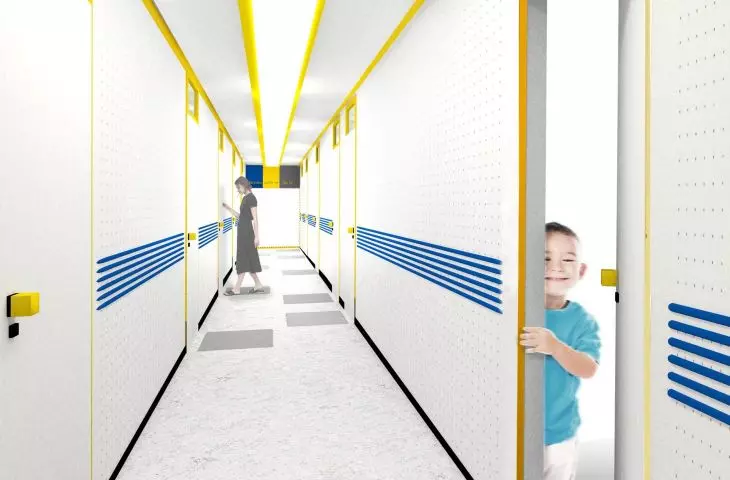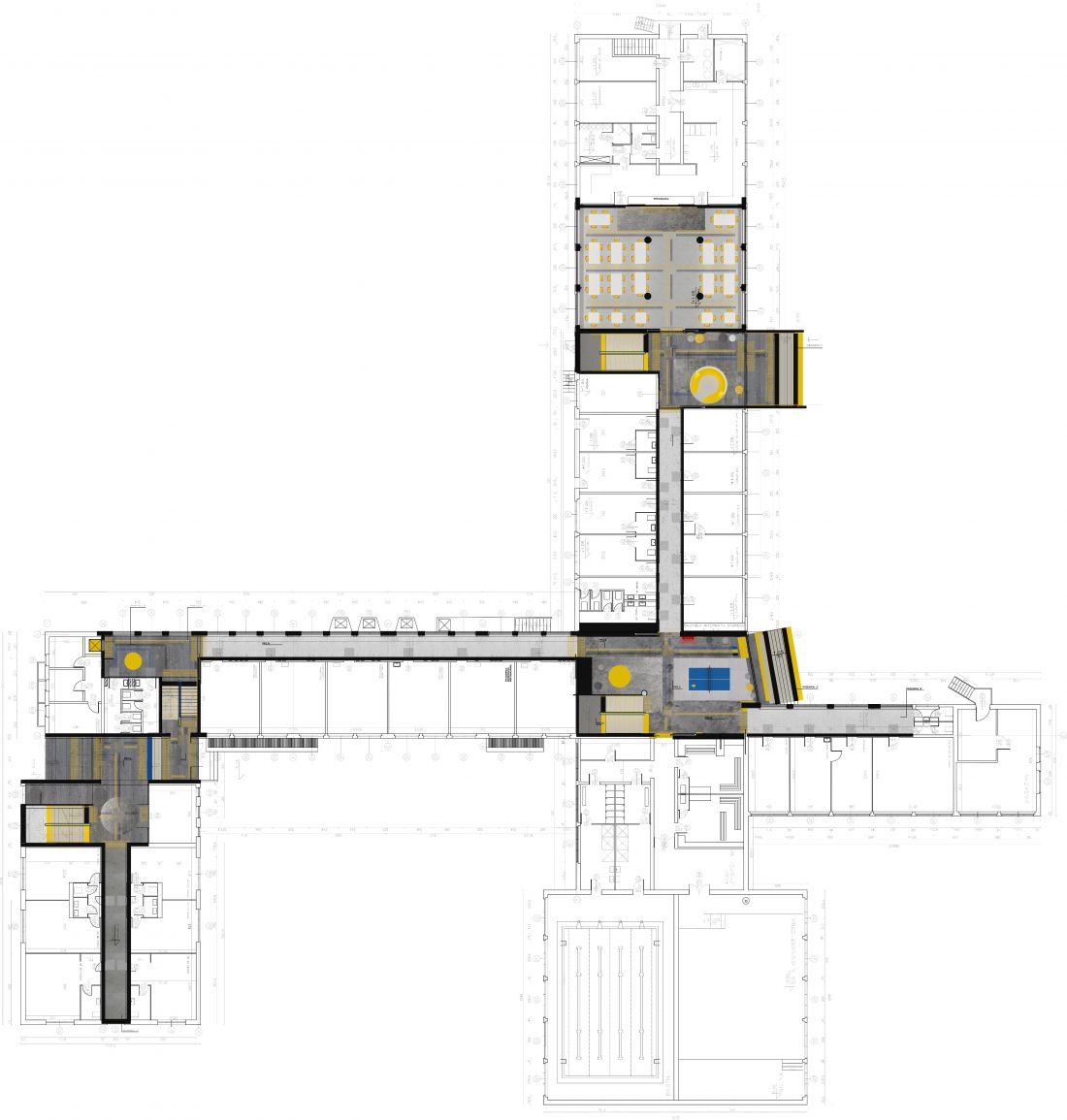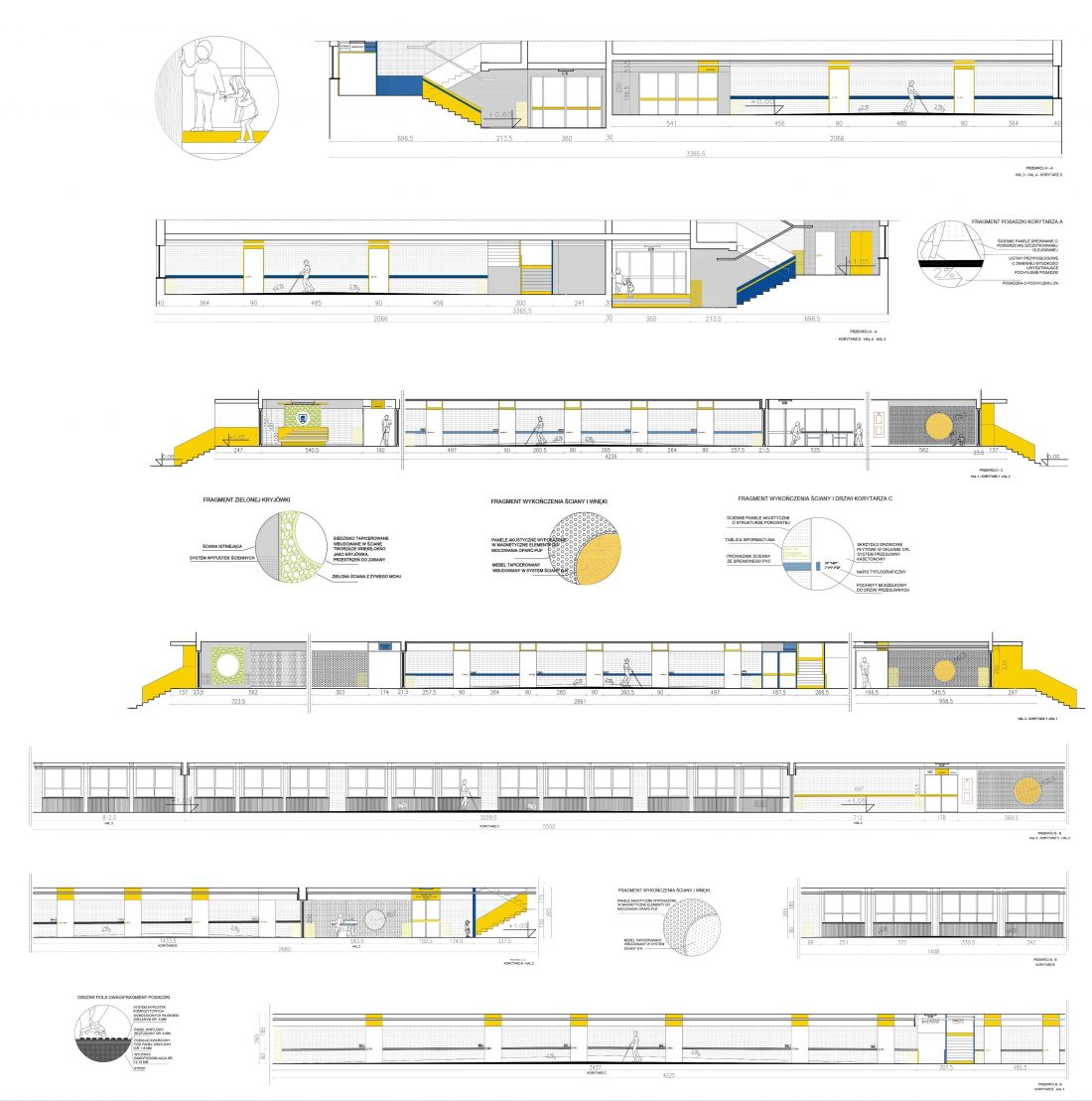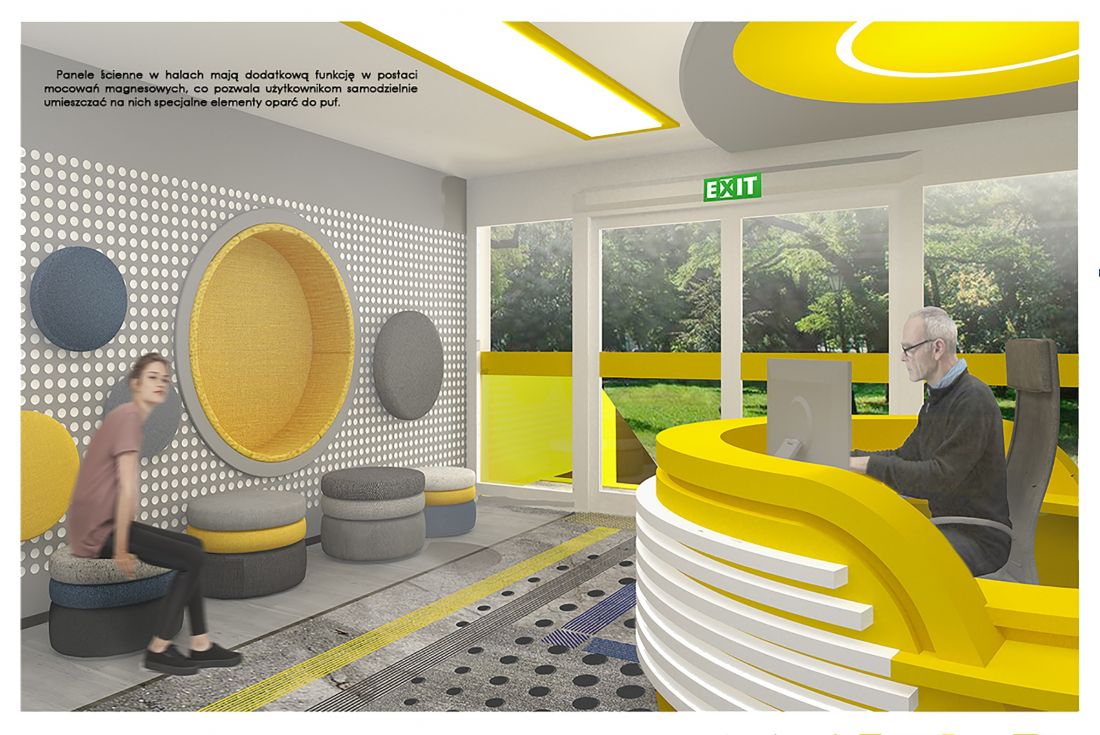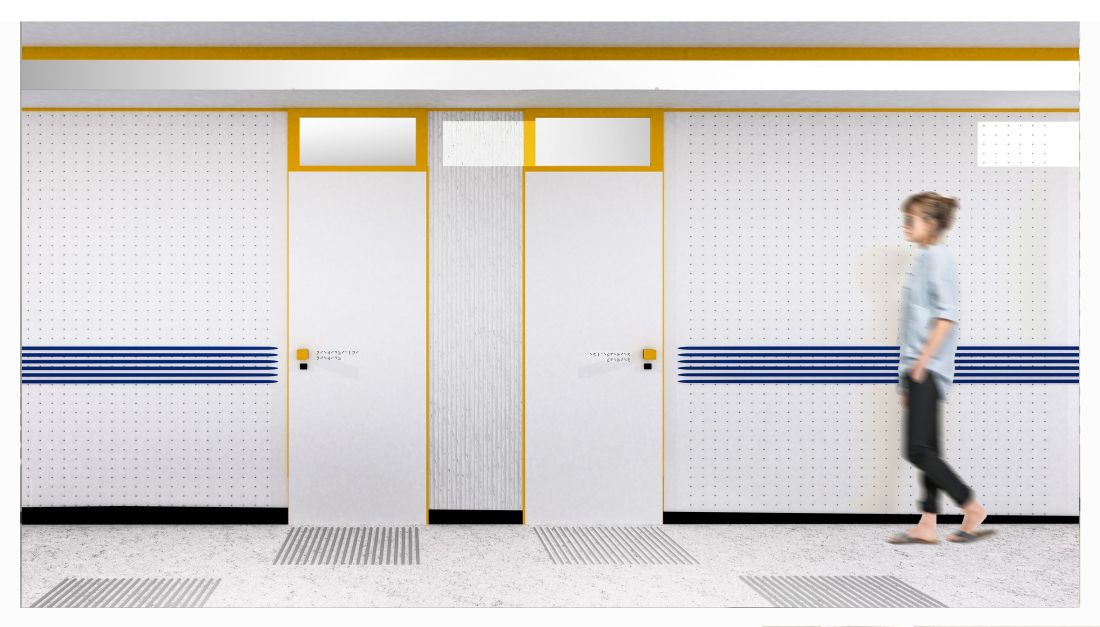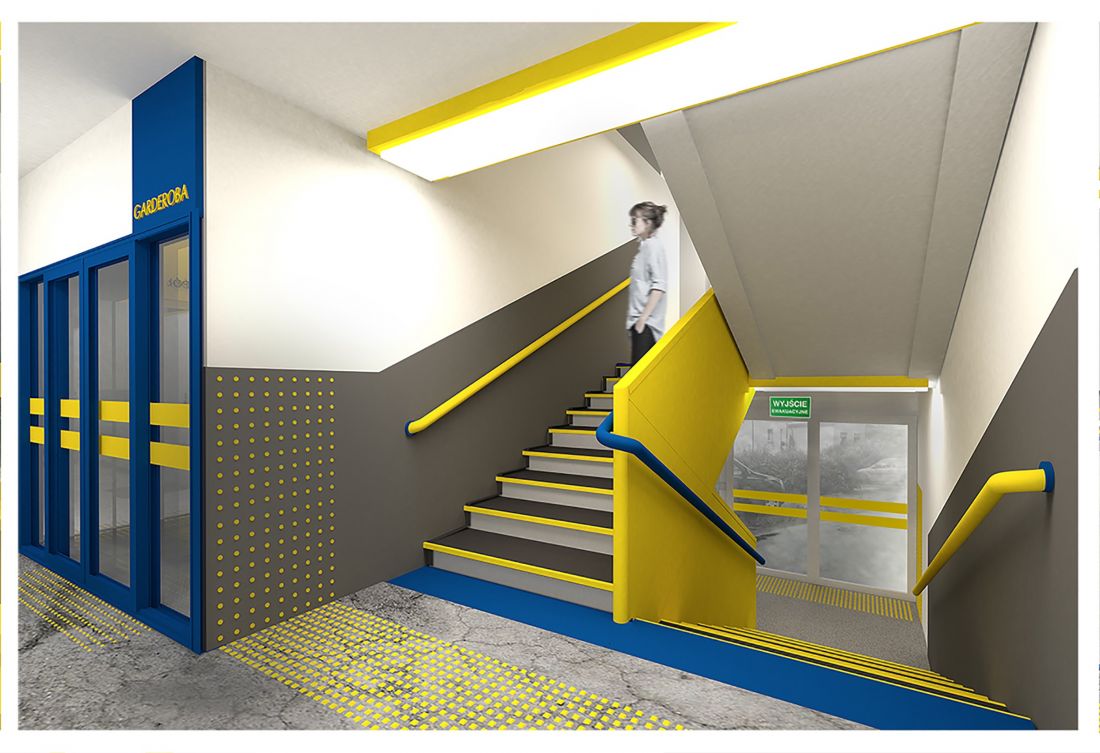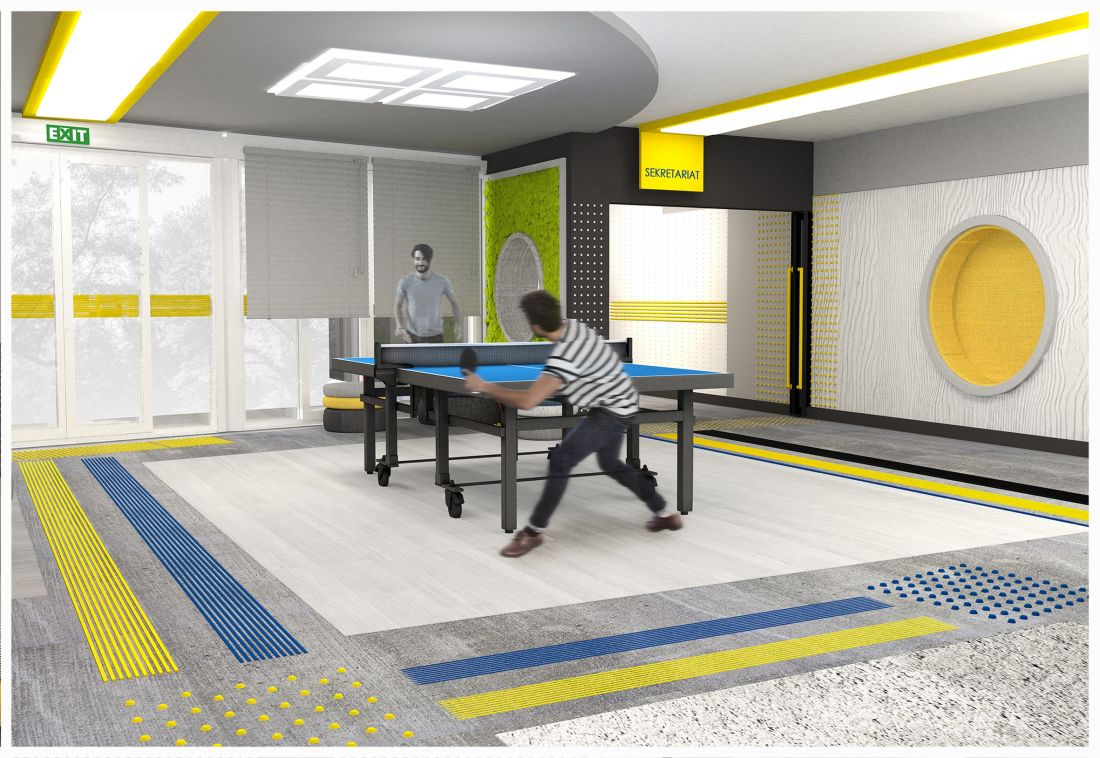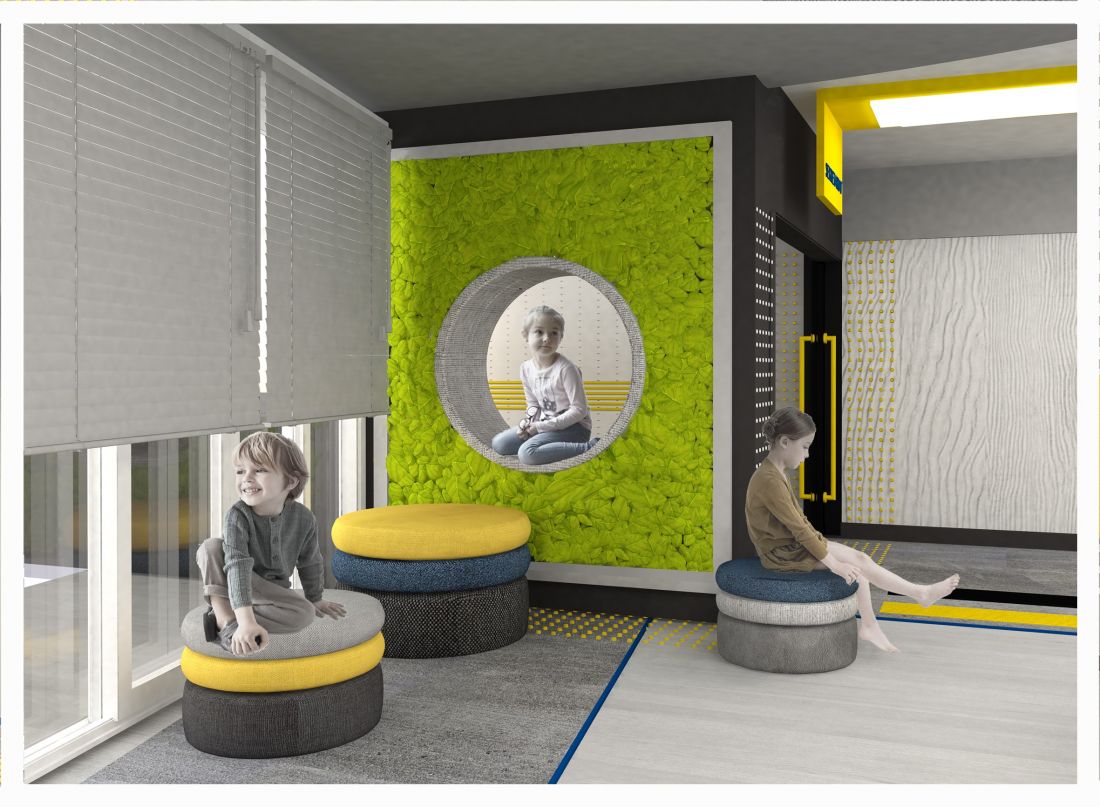Work submitted for the competition
"Best Interior Diploma 2020/2022".
The diploma project presents a research work on the issues of dioptric space design and a conceptual study of the modernization of the interiors of the center for the blind and visually impaired in Cracow. The research work focuses on the challenges of the space of the immediate environment of the center's alumni and residents. The aim of the study is to discover and solve problems in the functioning of blind and visually impaired people in the interiors of the center.
The SOSW building is located at 6 Tyniecka Street in Krakow
© Polina Zvolska
The SOSW building is located at 6 Tyniecka Street in Krakow. The main entrance leads to the entrance hall and reception area. Numerous corridors, stairs and passageways are meant to guide both blind and visually impaired, natives and "outsiders." Unfortunately, such vital communication spaces for the safety of alumni are not properly adapted and lack a clear idea of the facility's interiors that takes into account the needs of the blind and visually impaired. Conversations with educators and specialists at the center confirmed my observations.
Plan and cross-section of the SOSW center
© Polina Zvolska
From the interviews, I learned about various aspects of the center's alumni's daily life, their relationship with the SOSW space and many others that had a significant impact on the designed space, such as the sense of security and the role of habits in the alumni's daily life. The latter made me decide to make changes to their environment in a gradual manner.
Among other things, the project used acoustic finishing materials and flooring that varied in sound
© Polina Zvolska
The starting point for my consideration of this issue was a meeting with a girl who has been blind since birth. She said: "I can't see, so they shouldn't see me either!". As I deepened my psychological knowledge, I discovered very interesting correlations in the acceptance of one's own public visibility in society. There is a relationship in the relationship between people and the relationship between the blind person and the interior. In this interaction, the aspect of giving particular spaces specific marks or characters so that they can be identified through the senses is very important.
The use of the language of forms and surfaces is intended to facilitate the legibility of spaces for blind people
© Polina Zvolska
From the first step we take, the interior sounds, creates scent compositions, entices touch, that is, it informs and invades our senses to know the space. The blind person perceives the space as an interior revealed to him. This builds the next stage of the blind person's relationship with the interior - a sense of security and trust. One could say, the interior establishes an understanding with the viewer. In the case of a blind person, the integrated system of touch with hearing and smell acts as a guide.
The flooring, differentiated in sound, facilitates movement
© Polina Zvolska
The design features acoustic finishing materials, flooring differentiated in sound, gradients, informatively enriched structural surfaces and integrated attention field systems with guide lanes. The use of the language of forms and surfaces is intended to make the space easier to read for the visually impaired.
It has been proven that the last color a person stops seeing as a result of illness is yellow
© Polina Zvolska
The visual aspect of the space, which mainly concerns the visually impaired group, includes the handling of light and contrasting colors: black, yellow, dark blue. It has been proven that the last color a person stops seeing as a result of illness is yellow. Navy blue and black emphasize the contrast obtained.
Since a blind person is also phototropic, artificial light has been varied according to the nature and task of the space. For this, warm diffused light was used in communication hubs, halls and the cafeteria, and cold light was used in long corridor tracts. This affects the mood and well-being in a given space, perceived by all users.
Artificial light has been varied according to the nature and task of the space
© Polina Zvolska
Since the most numerous users of the center's space are children of different ages, I chose a way to implement the need for invisibility as part of a game of hide and seek. So as to feel invisible for a moment. Designed furniture serves this purpose - niches in combination with poufs and a system of green walls.
niches in combination with poufs and a system of green walls allow you to hide
© Polina Zvolska
The specifics of a given project allow us to consider aesthetics, going beyond visual aspects. In this case, we are talking about the aesthetics of tactility, hearing and imagination. Therefore, the challenge was treated in a multi-sensory way, simple and universal means of expression were used.
Polina Zvolska
Illustrations: © Author






